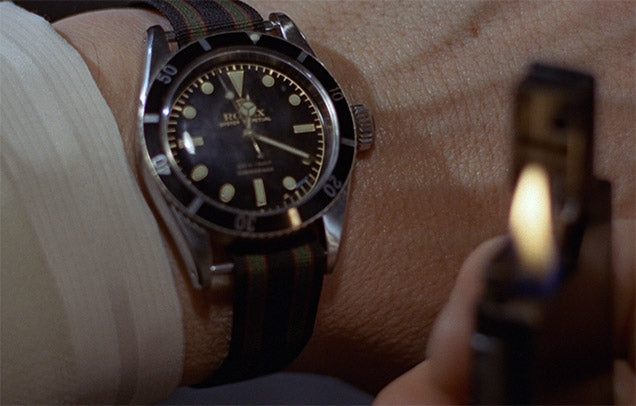A brief history of NATO straps
The popularity and ubiquity of the NATO strap undoubtedly stems from its ability to add versatility, colour and character to any wardrobe. They give watch owners the ability to dress down luxury watches for casual occasions where a leather strap may not be warranted. The single pass strap makes it easy to swap straps without need to remove your springbars. While today they serve a much more aesthetic purpose than anything else, the origin of the humble NATO strap is much more utilitarian in nature.
Nomenclature
It’s easy to forgive one for thinking that the NATO strap got its name because it was a standard issue strap given to North Atlantic Treaty Organisation or NATO soldiers. That assumption is not entirely correct. The name NATO actually comes from NATO Stocking Number or NSN.
In 1973, the British Ministry of Defense (MOD) introduced the strap in Defence Standard (DefStan) 66-15 under the straightforward description of "Strap, Wrist Watch". Before the Nato strap, British soldiers were each issued a chronograph with a traditional two-piece leather strap. Howevever, the MOD soon found leather unsuitable for the rigours of combat and tropical environments. The NATO strap was devised as a single-piece open ended strap that could be looped through the fixed bar apertures of the chronograph. These were also made of nylon which was more durable and preferred for its sweat wicking capabilities.
In order to get their hands on a new nylon strap, soldiers had to fill out a G1098 stock requisition form. The actual 13-digit stocking number for the strap was "6645-99-124-2986", therefore it made sense that the strap eventually picked up the colloquial nickname of “G10” or “G10 strap”.
It is at this point that things get a little tricky as not much is known about the evolution of the name from "G10" apart from the fact that it eventually became commonplace to call such straps a "NATO", stemming from NATO Stocking Number (NSN).
Very little information on when this transition occurred, so if you know anything about this piece of history let us know!

The original MOD NATO came only in a single variation: Admiralty grey, 20mm lug width and 280mm in length. This was so that they could be worn around uniforms or wetsuits. The single piece design meant that if one of the spring bars failed, the other would remain affixed to the strap, albeit somewhat precariously.
Earlier military-issued single pass watch straps were made of canvas and would be considered a predecessor to the MOD’s model. The three metal keepers and buckle were typically made of chrome-plated brass.

The Famous Bond NATO
If you’re into watches, you’ve probably heard the term “Bond NATO ”. This design was made popular by Sean Connery playing James Bond in Goldfinger (1964) by wearing his Rolex “Big Crown” Submariner Ref. 6538 on a fabric strap resembling the NATO. The strap was navy with two wide olive stripes flanked by a thin burgundy trim. Observant readers would have noticed that the movie predates the British MOD’s introduction of its standard issue nylon strap. This has led to much debate over whether this was a 'true’ NATO strap.

While it would near impossible to see the real thing, it has been suggested that Bond’s strap was a more simple design; A single straight piece of nylon instead of theY-shaped modern NATO we see today. That iconic "Big Crown" Submariner and Bond Nato also made an appearance in Thunderball (1965). Fast forward to 2015's release of the Bond film Spectre, and we see the revival of the humble Bond NATO on 007's wrist again. In Spectre, Daniel Craig can be seen wearing an Omega Seamaster 300 in a more subtle 5-stripe black and grey design pictured below.

The NATO has since exploded in popularity and can now be found in a multitude of colours. A large variety of weaving patterns also exist, offering a greater level of depth and texture for watch enthusiasts.
Our Picks

If you’re looking for a NATO strap that pays homage to the original MOD issued G10s, don’t miss our Classic collection of NATOs including one in Admiralty Grey.

If you’re in the mood for something more refined, you couldn't go wrong with an elaborately woven herringbone NATO. Pictured above is our Olive Bond Herringbone NATO strap in the same colours as the one worn by Sean Connery in Goldfinger and Thunderball.
Explore the full Herringbone Arete Collection.